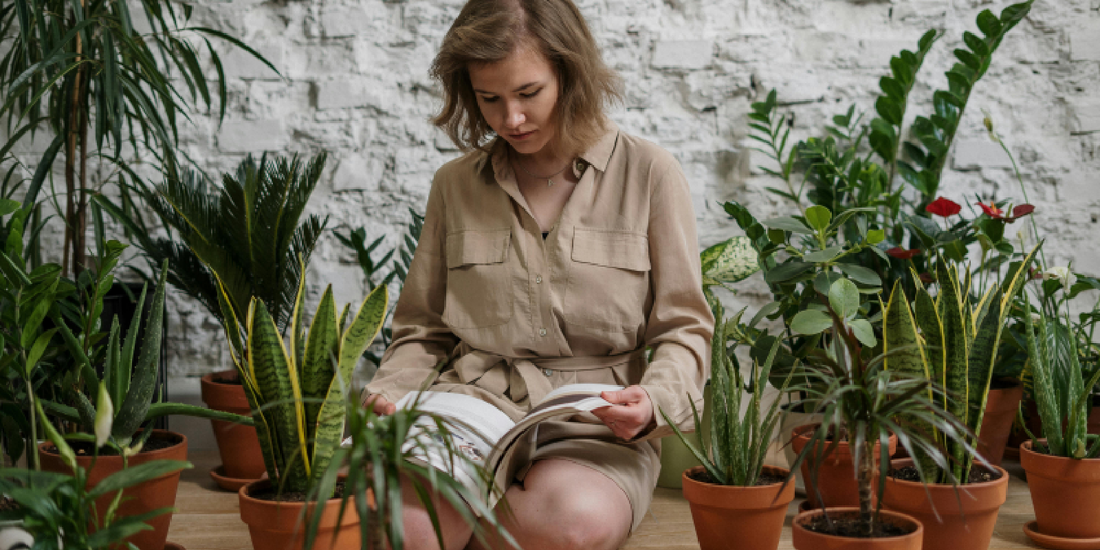
What’s the Difference Between Full-Spectrum and Red/Blue Grow Lights?
Share
When setting up your indoor garden—especially on compact shelving systems like the amoyls VerdantGlow S-Shaped 8-Tier Plant Shelf—one of the most important decisions you'll make is choosing the right type of grow light.
Two of the most common types are:
- Red/Blue (bi-spectrum) LED lights
- Full-Spectrum LED grow lights
But what’s the difference between them? And more importantly: which one is better for indoor plants on shelves?
This article breaks it all down—so you can make an informed decision and grow confidently with the best light for your space and your plants.
🌱 Why Grow Light Spectrum Matters
Plants rely on light wavelengths to perform photosynthesis and regulate their internal growth cycles.
- Light in the Photosynthetically Active Radiation (PAR) range (400–700nm) is the most beneficial.
- Different wavelengths (colors) affect different stages of growth.
- The right spectrum will promote stronger stems, greener leaves, and more vibrant flowers or fruit.
The VerdantGlow Shelf by amoyls uses full-spectrum LEDs, but to understand why, let’s first compare the two major options.
🔴🔵 What Are Red/Blue Grow Lights?
Red/Blue lights—also called bi-spectrum or purple grow lights—focus only on the red and blue parts of the PAR spectrum:
- Blue light (400–500 nm) supports vegetative growth (leaves, stems, compact shape).
- Red light (600–700 nm) encourages flowering, fruiting, and elongation.
When used together, these lights emit a purple or magenta glow, which is common in older-style grow tents or budget home grow setups.
✅ Pros:
- Energy-efficient for specific growth stages
- Good for leafy greens and starter herbs
- Affordable and widely available
❌ Cons:
- Harsh purple light that’s unattractive in living areas
- Poor visual clarity—hard to spot pests, discoloration
- Limited spectrum may miss secondary benefits of other wavelengths
🌞 What Are Full-Spectrum Grow Lights?
Full-spectrum grow lights mimic the natural light of the sun. They include:
- Blue and red light (like bi-spectrum)
- Plus green, yellow, orange, and far-red/UV components
These lights appear white or slightly warm to the human eye, offering a visually pleasing glow that supports all stages of plant growth.
✅ Pros:
- Supports full plant lifecycle: seed → leaf → flower
- Natural light appearance is easy on the eyes
- Helps reveal true plant colors for better care
- Ideal for multi-plant, multi-tier shelf systems like VerdantGlow
- Encourages better root and canopy growth
❌ Cons:
- Slightly higher upfront cost
- May use marginally more energy than narrow-spectrum LEDs
🧪 Scientific Breakdown: Spectrum Comparison
|
Light Spectrum |
Color |
Role in Plant Growth |
|
400–500 nm |
Blue |
Vegetative growth, leaf density, compact stems |
|
500–600 nm |
Green |
Penetrates deep into the canopy; secondary photosynthesis |
|
600–700 nm |
Red |
Flowering, fruiting, stem elongation |
|
700–750 nm |
Far-red |
Triggers shade response and bloom cycles |
|
380–400 nm |
UV |
Sterilizes mold/bacteria, enhances flavor & pigment |
|
6000–6500K |
Full-spectrum white light |
Balanced support for all stages of growth |
Red/Blue lights = Only blue and red
Full-spectrum lights = Blue + red + everything else
🪴 Which Is Better for Shelf Gardening?
When growing on a vertical or corner shelf, like the amoyls VerdantGlow, full-spectrum lighting offers several key advantages:
✅ 1. Uniform Plant Support Across Tiers
With multiple levels and plant types (herbs, succulents, foliage), a full-spectrum LED ensures:
- All plants get the wavelengths they need
- No need to move plants to different colored light zones
- Less risk of overexposure to red (leggy growth) or underexposure to blue (weak stems)
✅ 2. Visually Appealing for Living Spaces
If your shelf is placed in:
- A living room
- Kitchen
- Office
You likely don’t want an intense purple glow. Full-spectrum lights look natural and enhance the ambiance.
✅ 3. Better Monitoring of Plant Health
Under full-spectrum light, you can:
- Spot leaf yellowing
- Detect pests early
- Observe real color changes in leaves, stems, or soil
That’s not easy under red/blue lighting.
🧘 Practical Example: VerdantGlow in Action
Scenario: You’ve set up the VerdantGlow S-Shaped Shelf with the following:
- Top tiers: Succulents and rosemary (need high blue light)
- Middle tiers: Spinach, lettuce (need balanced light)
- Bottom tiers: Pothos and snake plants (low-light tolerant)
With full-spectrum LEDs, all your plants:
- Receive a balanced light profile
- Can stay in place—no rearranging for different spectrums
- Thrive under one system, from seedling to mature plant
💡 Bonus: The lights are plug-and-play, timer-compatible, and matched perfectly to the height of each tier.
👀 What Customers Say
“I switched from purple lights to the VerdantGlow shelf, and I’ll never go back. My plants look better, and my living room doesn’t look like a nightclub anymore.”
– Sarah T., Chicago
“My herbs grow fast, and I can actually see their color now. Full-spectrum is 100% worth it.”
– Leo M., Portland
🔁 Full-Spectrum vs. Red/Blue: Quick Comparison
|
Feature |
Red/Blue Lights |
Full-Spectrum Lights |
|
Light color |
Purple/pink |
White/natural |
|
Visual clarity |
Poor |
Excellent |
|
Plant stage suitability |
Vegetative or flowering |
All stages |
|
Aesthetic appeal |
Low |
High |
|
Use on shelves |
Limited |
Ideal |
|
Multi-plant support |
Inconsistent |
Consistent across types |
|
Cost |
Lower upfront |
Higher value long-term |
📌 Final Recommendation: Choose Full-Spectrum for Maximum Growth
While red/blue lights may be suitable for specialized grow tents or early seedling stages, they fall short in real-world applications—especially in multi-tier plant shelves like VerdantGlow.
Full-spectrum grow lights offer:
- Simplicity
- Versatility
- Beauty
- Full-cycle support
- Compatibility with any indoor environment
🌿 If you're growing a variety of plants in your home, full-spectrum is hands-down the best option for convenience, performance, and plant health.
🌼 Ready to Grow Smarter?
The amoyls VerdantGlow S-Shaped 8-Tier Shelf takes the guesswork out of lighting. It’s equipped with full-spectrum LED lights, optimized for all plant types and stages.
✔ Stylish design
✔ Tier-specific lighting
✔ Built-in energy efficiency
✔ Compatible with smart timers
✔ Perfect for beginners & pros
Explore the VerdantGlow Collection today and bring intelligent, spectrum-balanced light to your home garden.
Want more plant lighting tips? Visit the amoyls Blog for expert guidance on grow lights, shelf setups, and all things green.
